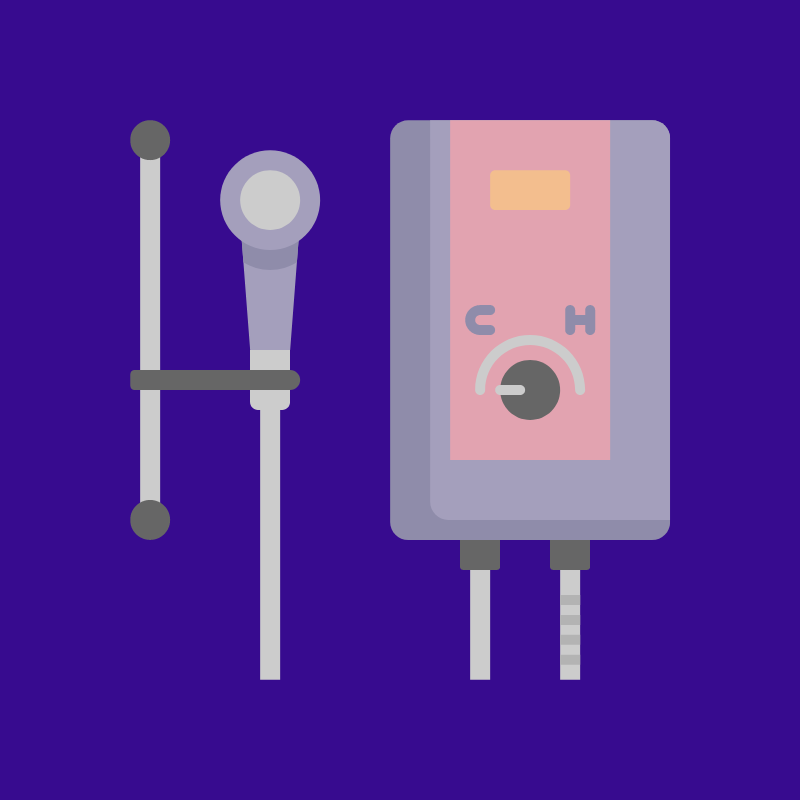Most of us expect adequate and consistent hot water when we turn on the shower or open a faucet, but this is not always the case. Sometimes, the water starts out great but soon turns lukewarm, delivers a shocking spurt of cold water, or the pressure falls and leaves behind trickling water.
This can lead homeowners to believe their water heater is incorrectly sized and wish they had a larger one to avoid these issues. In this article, we will explain why bigger is not always better in the water heater industry and how to determine the correct size to install based on the number of people in the home and their water-using habits.
We will be looking at traditional tank-style water heaters and tankless water heaters that operate without a tank but heat water on demand directly from the water supply line.
A properly sized water heater should supply consistent and adequate hot water at all times, especially when the demand is at its maximum, such as when multiple people are showering and the previous day’s dishes are being washed. Here, we will learn how to correctly size both types of water heaters.
Traditional Tank Style Water Heaters
Traditional tank-style heaters typically are powered by gas, propane, or fuel oil and range in size from 20 to 100 gallons. The size of the heater required will vary from home to home and will depend on several factors.
How They Work
Understanding how a traditional heater works is essential to sizing. Cold water enters the tank and is heated by a heating element. The temperature of the water is determined by the thermostat, which can be adjusted to meet the inhabitants’ comfort levels. Typically, the thermostat is set to 120 degrees Fahrenheit for maximum efficiency and sanitation.
The hot water remains in the tank and, if not immediately needed, is continuously reheated so it is hot when needed. As hot water leaves the tank to provide hot water at the tap or shower, an equal amount of cold water enters, ensuring the tank is always full. The time it takes to heat this water is known as the heater’s recovery time. The goal is for the heater to produce adequate hot water using the least amount of energy.
Problems With Over And Under Sizing
Water heaters must be correctly sized to avoid excess wear and tear and early replacement and to eliminate inconsistent or no hot water issues. Here, we will discuss the over and under-sizing of a water heater.
Undersized
An undersized tank-style water heater will not produce enough hot water to satisfy the needs of the inhabitants. This condition can be tied to an uninformed installer who did not understand the principles of water heater sizing, or it could be that the number of inhabitants has increased since the heater was installed. Either way, an undersized heater must be replaced.
Oversized
A heater that is too big carries its own problems. Oversized heaters waste energy since they are heating more water than is required. In addition, as the unused hot water cools, it must be reheated repeatedly, resulting in more energy waste.
Tank Size
Online usage charts can estimate tank size requirements. A family of two can do fine with a 23 to 36-gallon tank, three to five people require a 46 to 56-gallon tank, and families with five or more will need a minimum of a 56-gallon tank but should add 10 gallons for each additional member.
While these charts can be helpful, other factors must be considered.
Peak Hour
This is the highest amount of hot water that can be delivered, measured in gallons per hour, during the busiest time of day. Every hot water-using activity requires a certain number of gallons of water for the average length of the activity. For example, a shower requires 20 gallons, while a dishwasher needs 7 gallons.
Write down every activity your family engages in a day and add up the hot water requirements to determine your peak hour delivery.
First Hour Rating
This number is found on the water heater sticker and informs buyers of the hot water a fully heated tank can deliver during its first hour of production. This number is represented in gallons per minute and should be compared to the peak-hour delivery amount. Be sure to select a heater with a slightly higher first-hour rating than the peak-hour demand to ensure adequate hot water during the busiest period.
Tankless Water Heaters
If you are looking to reduce your energy bills and cut back on energy usage, a tankless water heater may be a better choice. These highly efficient systems only heat the water that is in demand, so no energy is wasted as with a traditional heater. Tankless systems also last more than two times as long as a tank-style heater, making their higher upfront costs irrelevant.
How They Work
Tankless water heaters only heat water being called for at the tap, the showerhead, or multiple water-using appliances. Instead of storing water in a tank, they draw it directly from the home’s main water supply and heat it to a predetermined temperature before being distributed.
Sizing
To determine the correct size, there are several factors to consider, such as the number of occupants and their hot water needs. Two calculations are essential to installing a tankless system that can provide adequate hot water. They are the flow rate and the temperature rise.
Flow Rate
The flow rate can be determined through simple mathematical calculations. You will need to write down the number of fixtures you will likely be running simultaneously. Every fixture has its own flow rate, which can be found online, or if you want to determine it precisely, you can test at home. Using an empty bucket, run the faucet or any fixture or appliance and record the water flow in one minute.
Add up all the fixture and appliance flow rates to get the total amount of hot water you will need at the busiest time of the day.
Temperature Rise
The next calculation will be the temperature rise, which is how much the temperature of the unheated water entering the tankless heater will need to rise to match the temperature set on the system’s thermostat. Again, the internet offers information to help. A search for the US Groundwater Chart will tell you your state’s average incoming water temperature. To determine the rise, subtract this number from your desired temperature.
If you find your temperature rise is so extreme that it will be impossible for your tankless heater to produce enough hot water, do not despair. Tankless water heaters can be installed in multiples with a single unit supplying hot water for one appliance, such as the washing machine. It is a bright idea to install multiple heaters to guarantee enough hot water even when the demand in your home is at its highest.
Looking To Replace Your Heater And Need Help Sizing It Properly?
We are experts at correctly sizing, installing, and maintaining tank-style and tankless water heaters so even the heaviest hot water demands can be satisfied. Call us today and join our long list of satisfied customers and see what we can do to impress you with our expertise, knowledge, and genuine consideration of your needs and budget. Call us today to discuss the sizing and installation of a new water heater!

